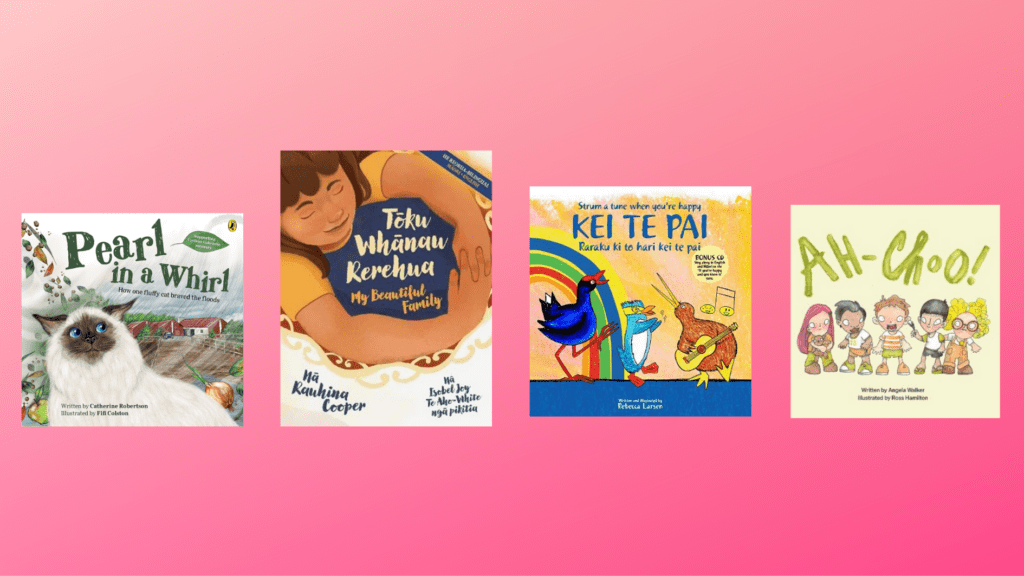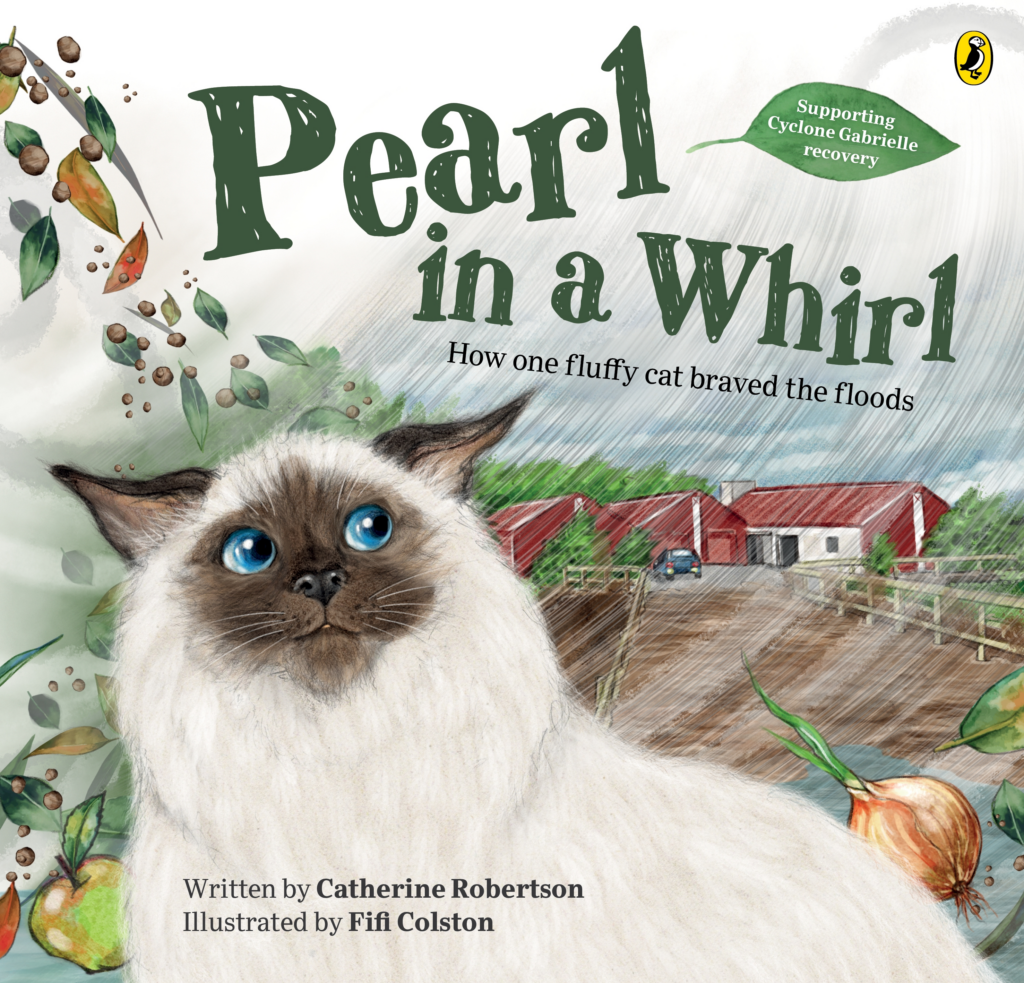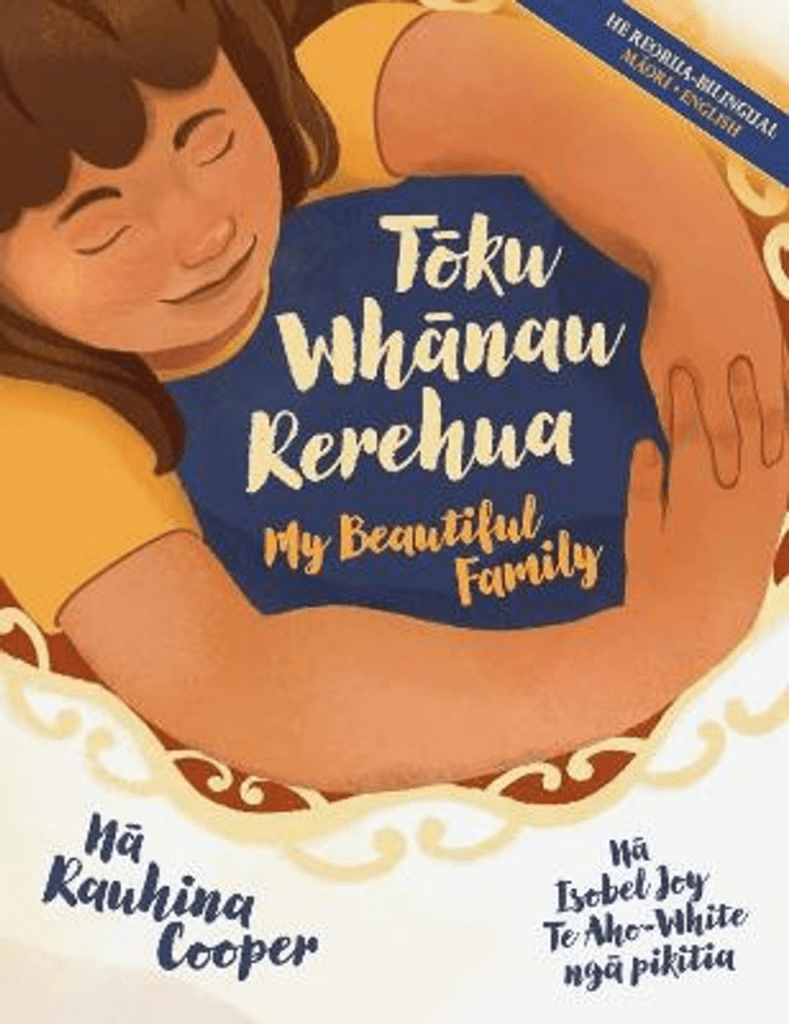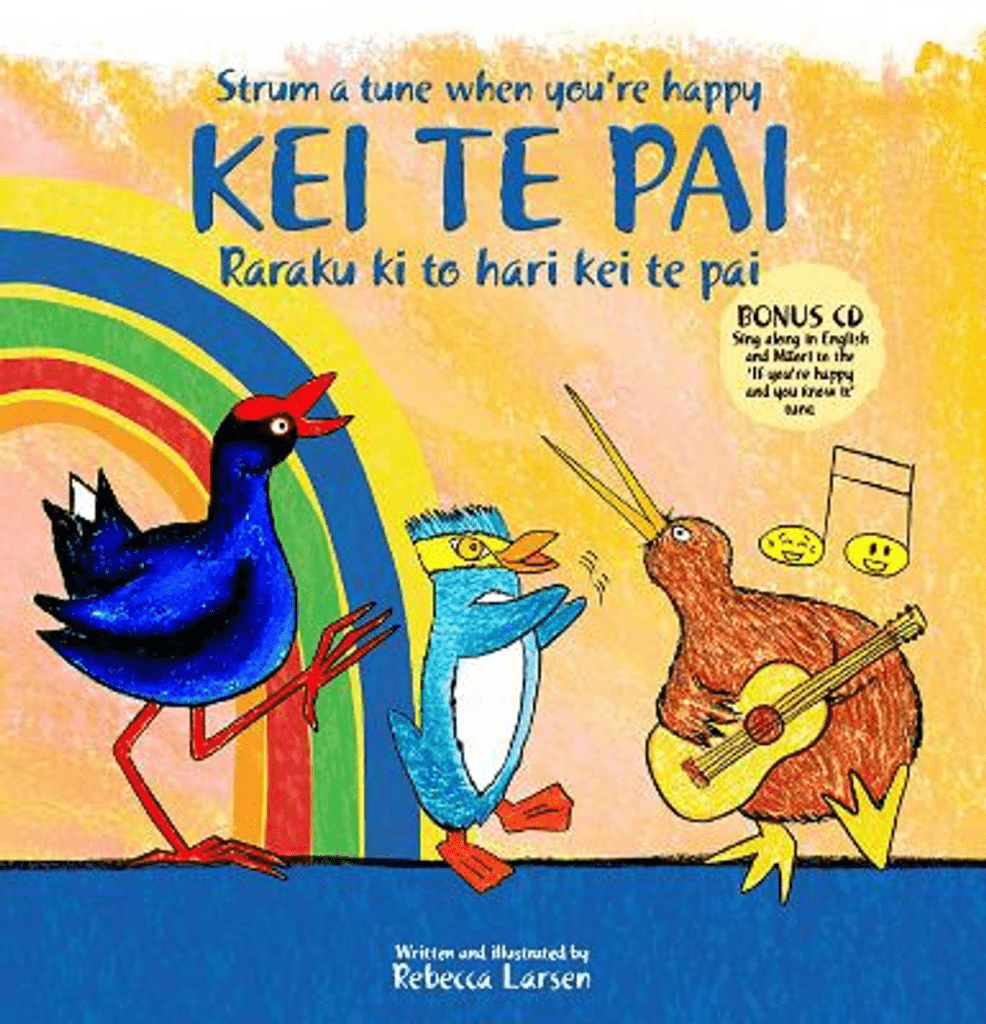Thalia Kehoe Rowden reviews four new books aiming to help children process their feelings and understand their place in the world.

Pearl in a Whirl, written by Catherine Roberton and illustrated by Fifi Colston
A good book for a good cause—what could be better?
Living through Cyclone Gabrielle spurred author-for-adults Catherine Robertson to produce her first picture book, telling the story of that cyclone, which is also a fundraiser to help recovery after it.
Remarkably, Penguin was able to publish this book in a very short time, so the proceeds from the book that are going to the Hawkes Bay Foundation can be put to good, immediate use.
Pearl is the real-life cat of Catherine’s friend Amy, and this is the true story of how she became separated from her family in the flooding, and was—phew!—rescued and returned to them before too long. Telling the story of the cyclone trauma from a cat’s point of view takes some of the sting out of the disaster for young readers. Pearl in a Whirl is a useful, compassionate, and even funny addition to the pantheon of therapeutic animal books.
Storm, flood, separation, helicopter rescuers, reunification—this story has everything, and it’s cleverly and economically told. Just as important as the drama, though, are the everyday details of cat life that Catherine and Fifi capture so well. Both before and after the flood, Pearl is a cat who enjoys:
“Swatting.
And slurping.
Hiding.
And sleeping.”
And doesn’t that just sound like every cat you know?

Pearl in a Whirl: How one fluffy cat braved the floods
Written by Catherine Robertson
Illustrated by Fifi Colston
Published by Penguin
RRP: $21.00
Tōku Whānau Rerehua/My Beautiful Family, written by Rauhina Cooper and illustrated by Isobel Joy Te Aho-White
There’s a lot to like about Rauhina Cooper’s debut picture book, and it’s a book that should be on the shelves of every school library. In this quiet story about different kinds of families, kids can explore and celebrate families of all shapes.
Children need all kinds of books, including silly, fantastical ones about talking toys, and realistic ones about important issues in their lives. Tōku Whānau Rerehua is an important contribution to Aotearoa’s literature on diverse families—a group of books that is still far too small. It’s possible this is only the second local book to feature a two-mum family, after Things in the Sea are Touching Me by The Sapling’s own Linda Jane Keegan. We need more, please!
Huia is feeling shy about the class’s focus on families. Cooper doesn’t show us exactly what Huia’s worries are, but they’re big enough that she ‘forgets’ to bring her family photo to school to show everyone. We find out later that Huia has two mums—and that everyone in her class is excited to see her whānau picture.
Tōku Whānau Rerehua is an important contribution to Aotearoa’s literature on diverse families
I was a little confused about that plot point, since in the schools I’ve been part of, there aren’t a lot of mysteries about who children live with. Did Huia really think that no one in her class knew that she had two mums? But the pattern of each child sharing their pictures and ‘revealing’ the uniqueness of their whānau structure is the point of the book, and well worth putting in front of readers. Led by the lovely Whaea Hera, the class celebrates and embraces each contribution, with lots of ‘that’s just like me!’ exclamations as they make connections between their same-and-different circumstances. This really is a valuable book for all small children to read with a loved one, and then to talk together about their own whānau.
A highlight is that the book is fully bilingual, with the reo Māori text coming first throughout. Isobel Joy Te Aho-White’s warm illustrations are nicely laid out and backgrounded with toi Māori motifs. There are some beautiful details in the depictions of Huia’s house and classroom.
There are a couple of spelling mistakes in the English text, and while the highlight font is striking and brings variety, it is so swooshy that it is sometimes hard to read. But this is still an absolute must-purchase for all early childhood and school classrooms, and for your whānau, too.

Tōku Whānau Rerehua/My Beautiful Family
Written by Rauhina Cooper
Illustrated by Isobel Joy Te Aho-White
Published by Oratia
RRP: $22.99
Ah-Choo!, written by Angela Walker and illustrated by Ross Hamilton
Max is longing for a neighbour to play with – someone who is just like him. When Jun moves in, they play together with a feather until Max is surprised to discover not everyone says ‘Ah-choo!’ when they sneeze.
Max embarks on a quest, tickling every kid in the playground with his feather to find out what they say when they sneeze. Koa says ‘Tihei!’, Laura from Norway says ‘Atsjo!’, and so on.
Of course, Max eventually concludes that sneezing differently doesn’t mean you can’t be friends, and by the end, he has adopted Jun’s Japanese sneeze.
It’s a good concept, using a new, everyday thing to show that we’re all different, and that’s okay. The story needed a bit more refinement, though. The feather device doesn’t feel natural, and I felt a bit queasy watching Max thrust it in all these children’s faces, without consent, to audition them for friendship without them knowing.

Ah-Choo!
Written by Angela Walker
Illustrated by Ross Hamilton
Published by Bateman Books
RRP: $22.00
Strum a Tune When You’re Happy Kei Te Pai, by Rebecca Larsen
This latest instalment in Rebecca Larsen’s series of adaptations of popular rhymes takes ‘If You’re Happy and You Know It’ and matches it with instruments, colours, and emotions to equip young children with helpful vocabulary.
The whole text is in English and te reo Māori, beginning with rhyming couplets to set up the song before moving into the music. There’s a glossary, sheet music, a CD, and a QR code at the back so you have everything you need to get going.
My daughter loved it, and sang the whole thing through to me. She struggled a bit with fitting the words in, as the text doesn’t always scan very naturally. She enjoyed learning new reo Māori vocabulary throughout.
The whole text is in English and te reo Māori, beginning with rhyming couplets to set up the song before moving into the music
The illustrations are deliberately child-like, but are not always very thoughtfully composed or successful in portraying difficult things like a kākāpō whistling. The animal scenes feel interrupted by incongruous musical notes displaying the relevant emotional faces. The production would benefit from a designer’s input.
Overall, there’s a bit too much going on all at once—a familiar tune with new words in two languages (the English version is actually half-and-half English and reo Māori), overly busy illustrations of animals doing different actions, new emotions in each verse, colour-coding, and even a page where we count to ten.

Strum a Tune when you’re happy kei te pai
By Rebecca Larsen
Published by Bateman Books
RRP: $21.99

Thalia Kehoe Rowden
Thalia Kehoe Rowden is a former co-editor of The Sapling, and a Wellington writer and human rights worker. She is passing on a family inheritance of book dependency to her two small children, and is delighted to be part of The Sapling, as it gives her even more excuses to read excellent children's books. You can follow her on Twitter, Facebook, and at her parenting, spirituality and social justice website, Sacraparental.



